Is it moonshine this Fort Worth distiller is ‘experimenting’ with? Here’s what we found
Inside Look stories give Star-Telegram subscribers exclusive sneak peeks and behind-the-scenes reporting. Story suggestion? Editors@star-telegram.com.
On the lush grounds of what used to be the Glen Garden Country Club, Whiskey Ranch found its home with clear views of downtown Fort Worth. All 112 acres of the former golf course has been transformed to showcase the TX Whiskey brand for bourbon-curious novices to the aficionados.
“We’ve crafted a modern distillery where guests can enjoy the quality, charm, and hospitality of Texas,” it’s website claims.
Leonard Firestone & Troy Robertson, owners of TX Whiskey, saw the opportunity in 2018 to turn this into their whiskey wonderland. Whiskey Ranch not only revitalized the golf club, but also found a facility that could house every part of their whiskey making operation. The property includes a ranch house, tavern bar, stillhouse, bottling house, and barrel barn. Tours are available to experience the breadth of the distillery’s processes.
“Our immersive tours explore the art & science of whiskey distilling — entertaining for whiskey experts and beginners alike,” according to its website.
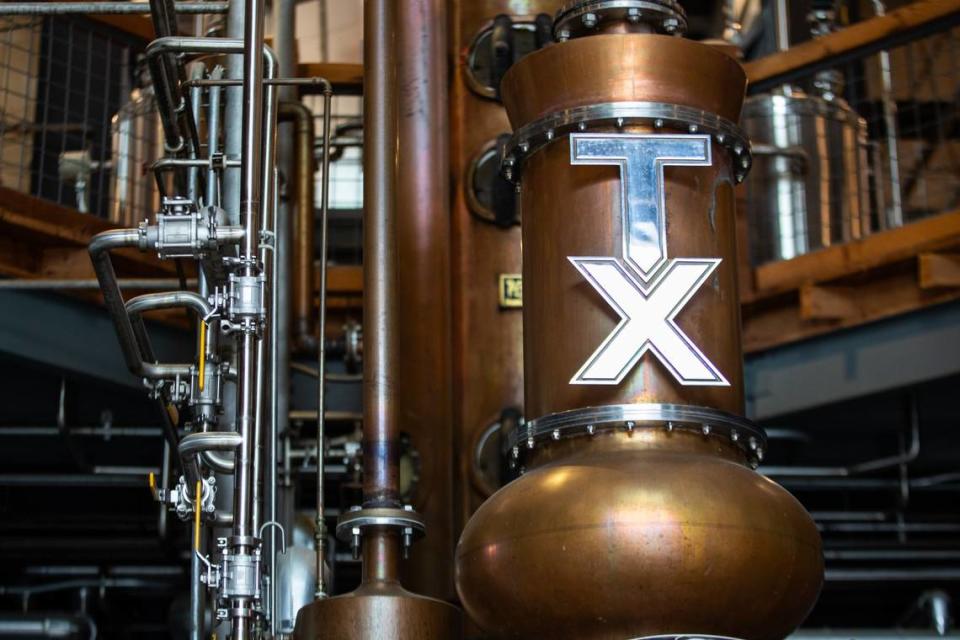
⚡ More trending stories from our newsroom:
→Will American Airlines flight attendants strike? If so, when? What travelers should know.
→ Why was Kevin Costner in Fort Worth? Here’s where he was spotted in the Stockyards
→ As Fort Worth population booms, pushback against new apartments isn’t budging
Whiskey Ranch is located on 2601 Whiskey Ranch Road. The ranch house is open Wednesday and Fridays from noon to 9 p.m., and Friday and Sunday from noon to 5 p.m. Tours are offered Wednesday through Saturdays as well.
So, what’s been cooking lately?
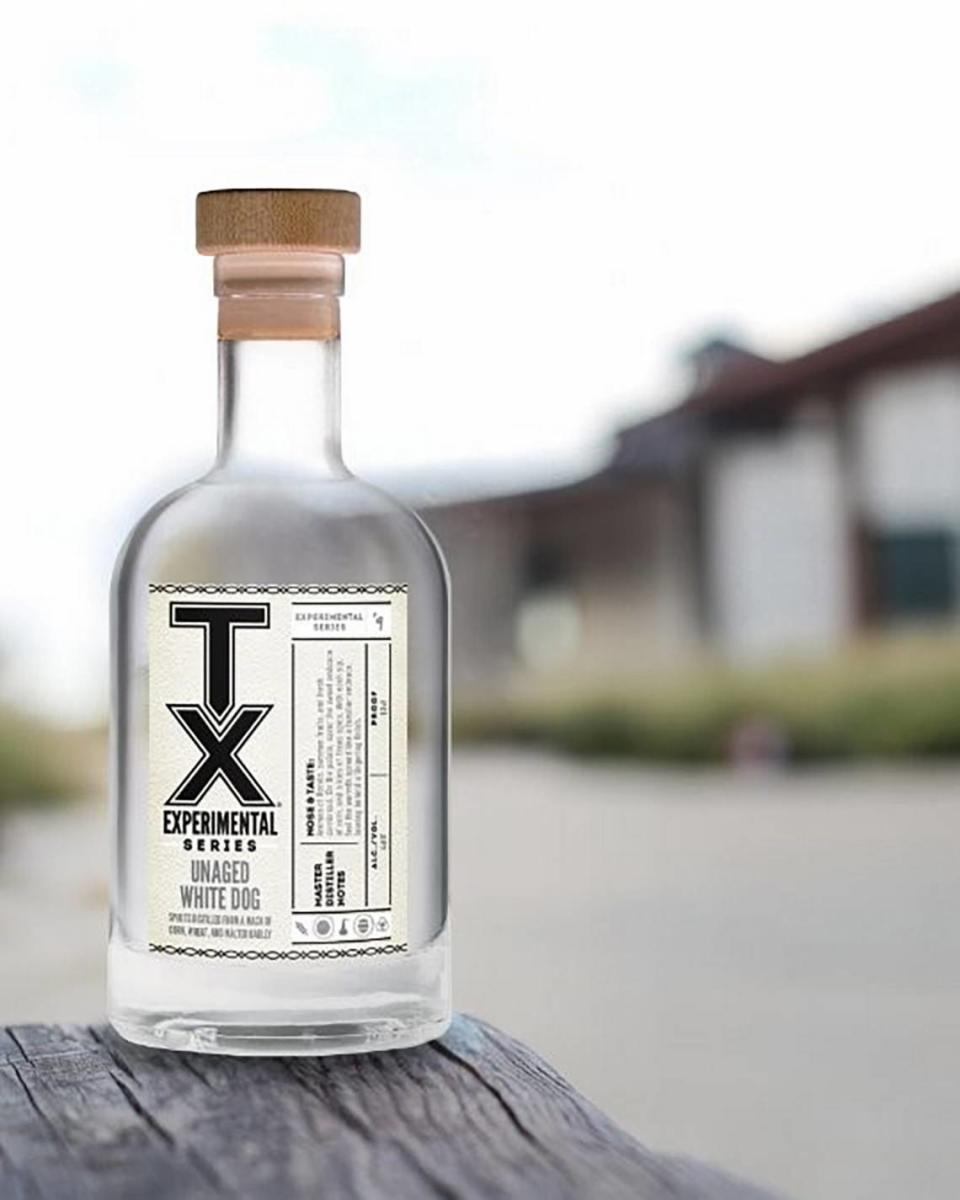
Is this Texas ‘experimental’ whiskey moonshine?
TX Whiskey is launching a new type of spirit: Unaged White Dog. This blend uses all the same ingredients as your favorite bourbon, but skips ove one crucial step: The aging of the whiskey, which for many is considered when the spirit matures and mellows.
Some may hear clear “whiskey,” and think: “Is this stuff moonshine?”
Whoa! Wait one Texas minute. Moonshine is moonshine because it is pertains to the illegal distilling of spirits, TX Whiskey lead distiller Evan Brewer told the Star-Telegram. But White Dog is in the up-and-up.
“The two are distilled in a very similar way, however TX Whiskey’s is better because it’s professionally made,” Brewer added laughing
But all you lovers of good moonshine: It may have a familiar taste.
Normally, TX Whiskey produces bourbon, and offers a whiskey blend as well. They distribute nationwide, in retail and restaurants. The company touts its local sourcing — everything it uses to make its whiskey come from North Texas suppliers.
Unaged White Dog however is a part of their “experimental series.” This is the last, of nine, limited edition bottles.
“This series is a way for us to show off things that we are able to produce here at Whiskey Ranch,” Brewer said. “Whether it be changing things up from distillation or fermentation, every small thing matters when making a final product.”
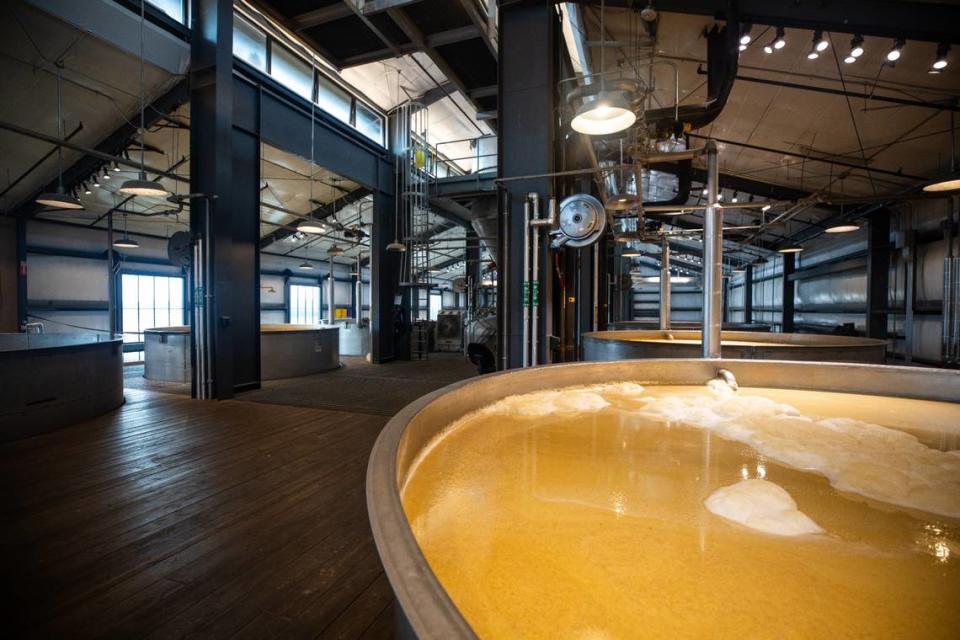
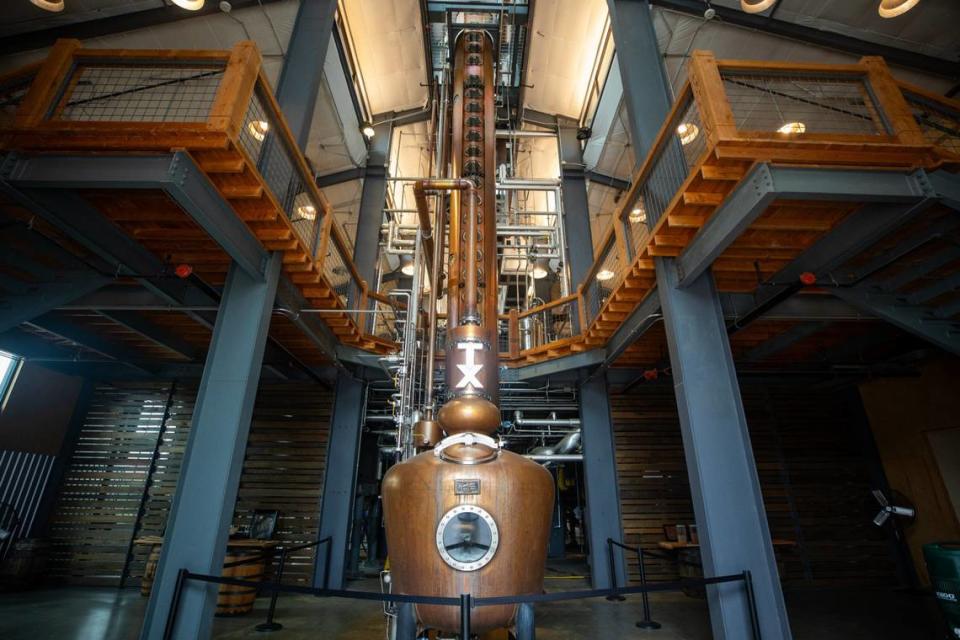
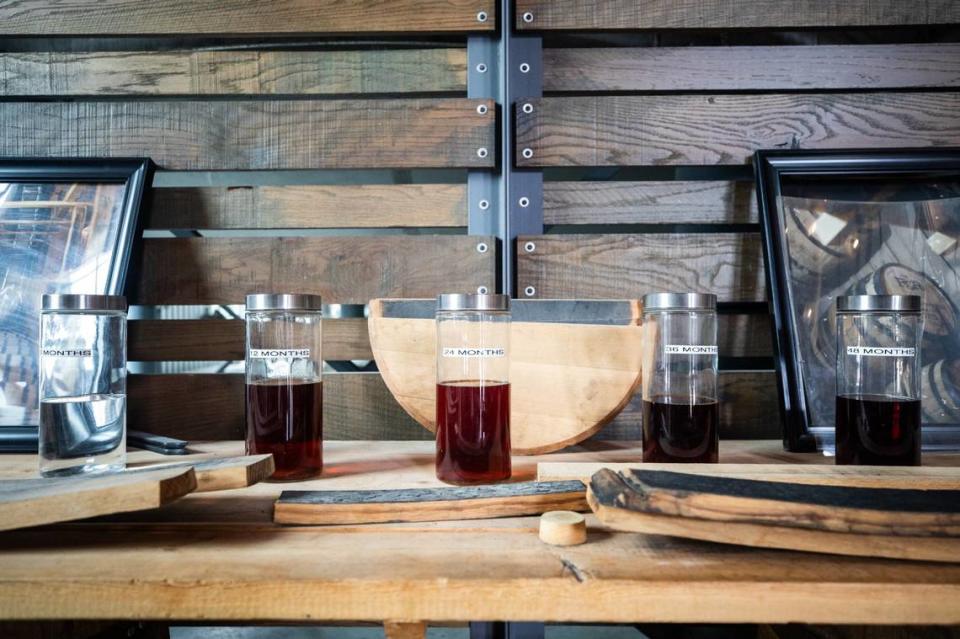
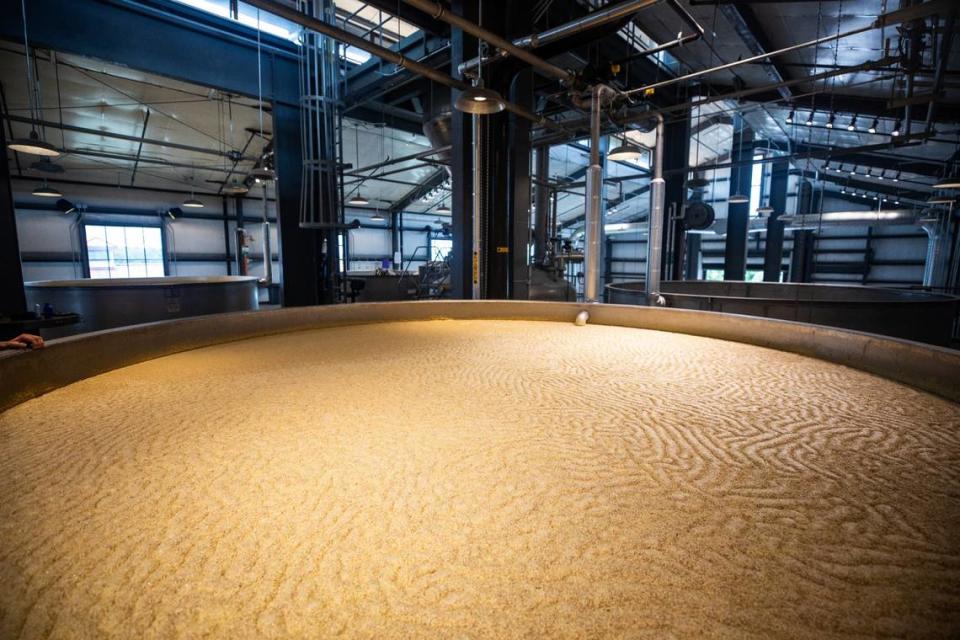
How TX Whiskey’s Unaged White Dog gets its fangs
One of the things that TX Whiskey can do is distill spirits like the Unaged White Dog.
The liquor only took about a week to make. The whole process is done in a “50-foot, 36-inch column with a 500 gallon doubler,” Brewer explained.
First, comes the grain. All corn, barley, wheat, and rye are from Sawyer Farms in Hillsboro. They also malt their barley right here in Fort Worth at TexMalt, 15 minutes from Whiskey Ranch.
Another thing that makes TX Whiskey different from other brands is that they are the first distillery since prohibition to have proprietary yeast, meaning their yeast strand is exclusive to the brand. They capture their yeast from pecans off a ranch in Glen Rose. I mean you just can’t get more Texas than that.
Here’s how White Dog gets its fangs.
The grain gets ground through a double roller-mill. A standard bourbon recipe — 74% corn, 14% wheat and 12% malted barley — is used. After milling, the grains are weighed and cooked by the 8,000-gallon scale hopper. Once this machine is heated to 150 degrees fahrenheit, the corn goes in. Once the grain comes to a boil, the heat is turned down, and the rest of the wheat and malt barley (small grains) get added.
“The wheat is there for starch and flavor, the malt is there for scratch, flavor, and enzymes,” the lead distiller explains. “The malt has the enzymes in there that will actually break down the sugars, into fermentable sugars.”
From the scale hopper, the grains then make their way to a 16,000-gallon fermenter. Here the mixture will sit for three to five days before being transferred to a fermentation pool where the oxygen is extracted.
Once initial fermentation is completed, the mixture goes into a 25,000-gallon beer well. At this point the liquid is a “wash” — a beer-like substance. The material is pumped up into the column, heated up once more, and this time the liquid that comes out is liquor.
The spirit is 140 proof while in the column, but the finished White Dog liquor is condensed to 120 proof.
What’s the difference between whiskey, scotch, and bourbon?
Unaged White dog doesn’t classify as whiskey or bourbon, although it is distilled with 100% Texas corn. The key differences between types of whiskey are what they are made of, according to Food and Wine. Bourbon is based on corn, scotch is based on barely, and rye whiskey is based on well, you guess it, rye.
Whiskey itself is classified as “wood-aged spirits that have been distilled from a fermented mash of grains.” So bourbon, scotch and rye are all whiskey, however, not all whiskey are created in the same way. In America, whiskey is distilled with mostly corn or rye. In the U.K., whiskey is primarily distilled with barely.
TX Whiskey primarily makes bourbon, which some may think can only made in Kentucky.
“Bourbon has to be made with at least 51% corn, can be made anywhere in the U.S.A., cannot be distilled at more than 160 proof, and must be aged in new charred oak barrels,” Brewer said.


